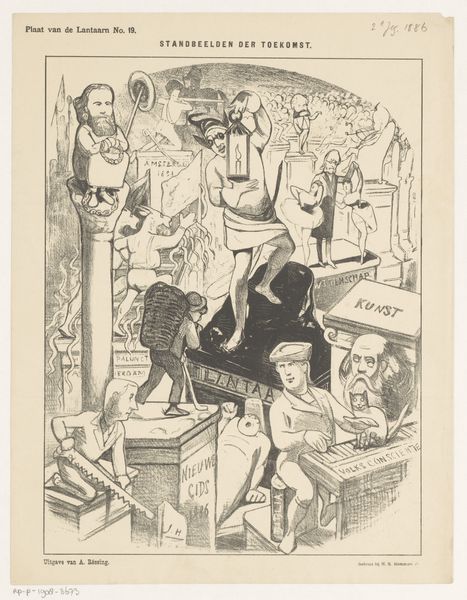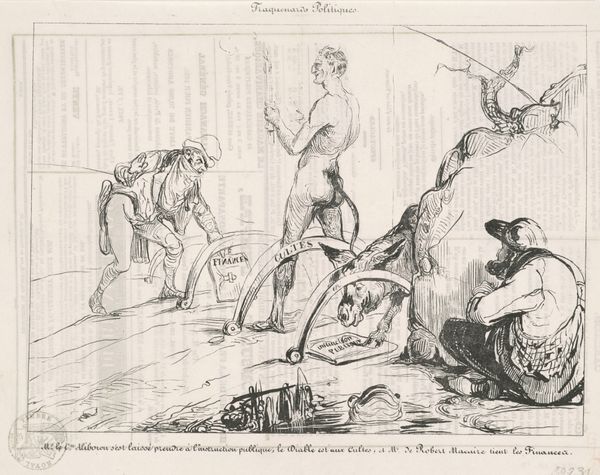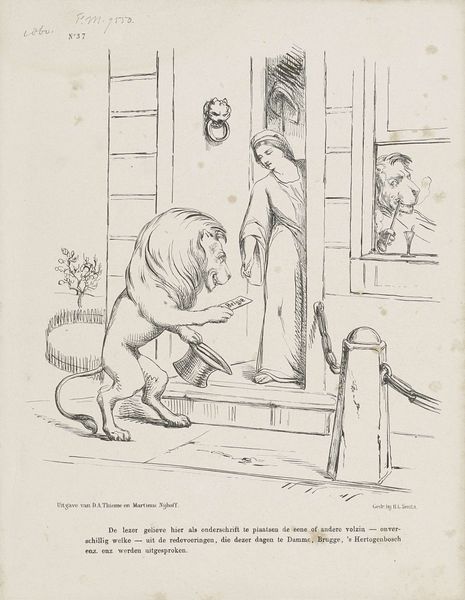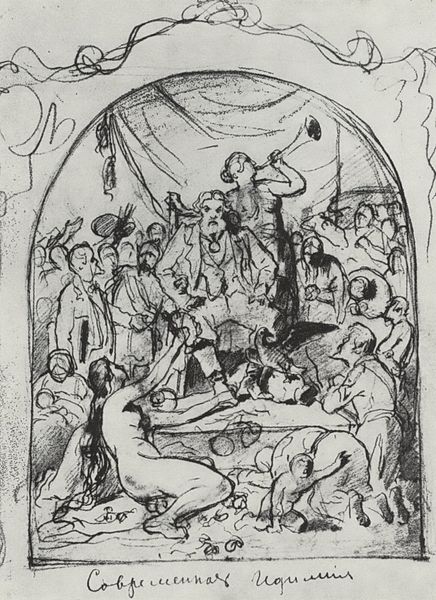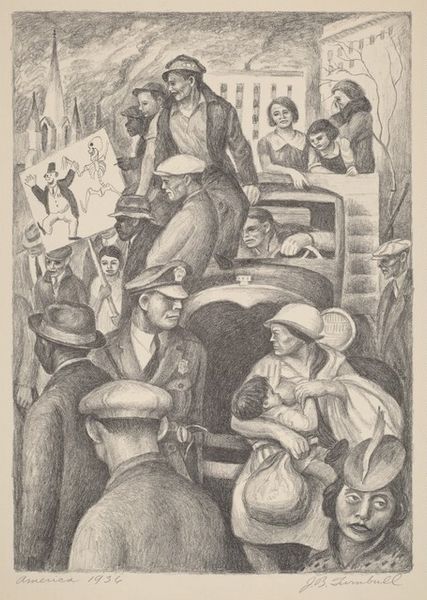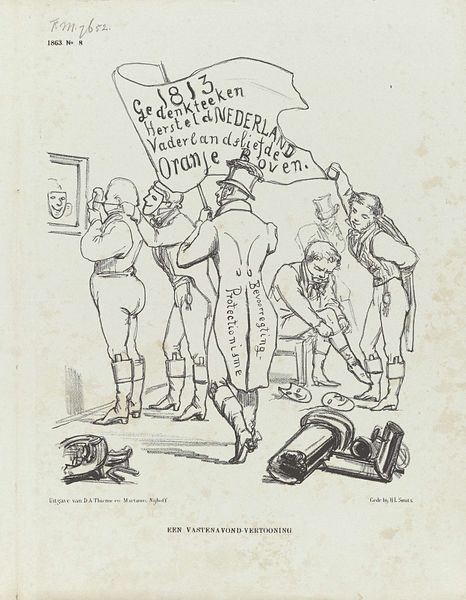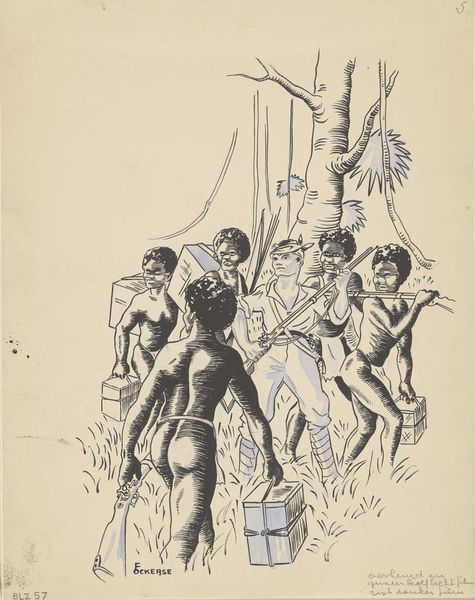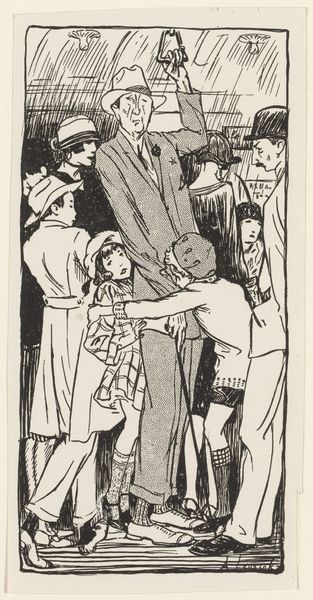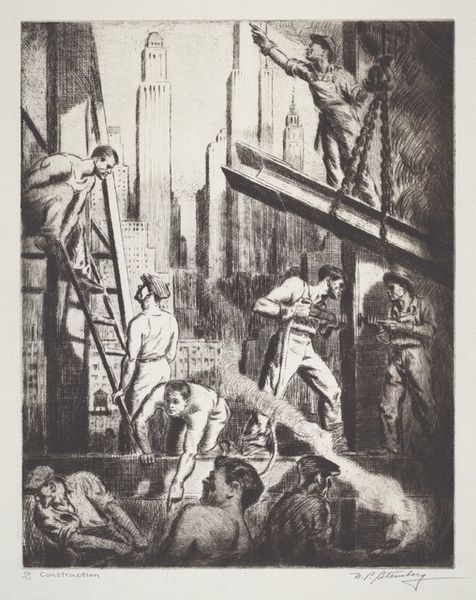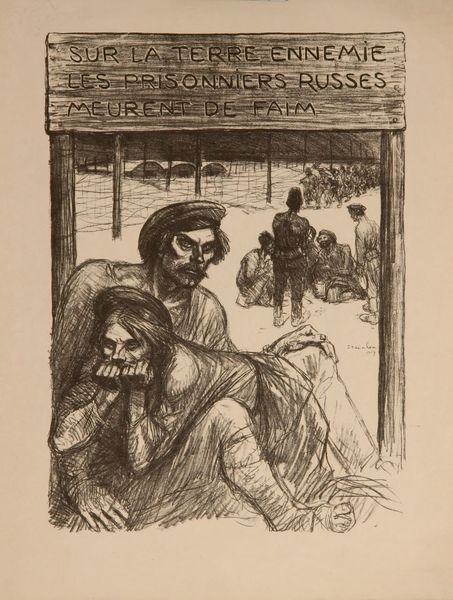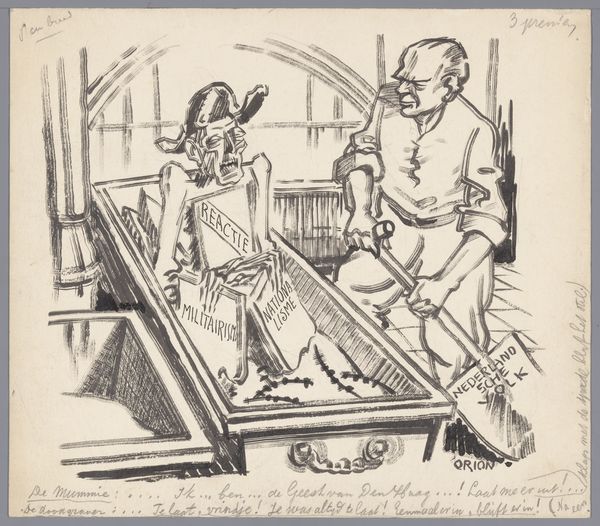
drawing, print, etching, pencil
#
drawing
#
comic strip sketch
#
light pencil work
# print
#
etching
#
pencil sketch
#
figuration
#
personal sketchbook
#
idea generation sketch
#
sketchwork
#
pen-ink sketch
#
pencil
#
sketchbook drawing
#
pencil work
#
genre-painting
#
storyboard and sketchbook work
#
realism
Dimensions: plate: 150 x 101 mm sheet: 243 x 189 mm
Copyright: National Gallery of Art: CC0 1.0
Editor: So, this is "Circus II" by Esther Bruton, created around 1930. It’s an etching, depicting a scene at a circus with people looking at caged animals. The mood feels kind of… somber, even though it's a circus. What strikes you most about it? Curator: Well, it's interesting how Bruton captures the social dynamic of spectatorship. This isn’t just a picture of a circus; it's a snapshot of an event shaped by socio-economic factors. The dress of the figures suggests a particular social class engaging in a form of entertainment readily available during the Depression era. Note how the composition seems to distance us from the animals. Why do you think that is? Editor: Maybe to emphasize the separation, like highlighting the divide between humans and the caged animals? Curator: Exactly. Circuses, historically, have played a role in reinforcing power structures, both human and animal. Look at how the animals become commodities, displayed for public consumption. This image seems to capture that tension – the exoticism of the "wild animals" juxtaposed with their captivity. Does that resonate with the other works of the period? Editor: Definitely, it's easy to see the influence of documentary photography of the era, trying to portray everyday life during economic strife. Maybe even critique it? I never considered the circus itself as a form of social commentary. Curator: And isn't that the power of art? To challenge our assumptions, sparking new conversations around historical events? Consider how art institutions have historically treated artwork made by women, relative to their male peers, like Esther Bruton, then maybe there are more angles that need to be researched. Editor: This has really changed how I view this etching. I'm going to have to rethink my assumptions! Curator: Likewise, your observations have certainly broadened my perception too!
Comments
No comments
Be the first to comment and join the conversation on the ultimate creative platform.
